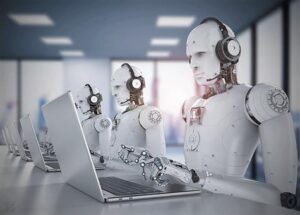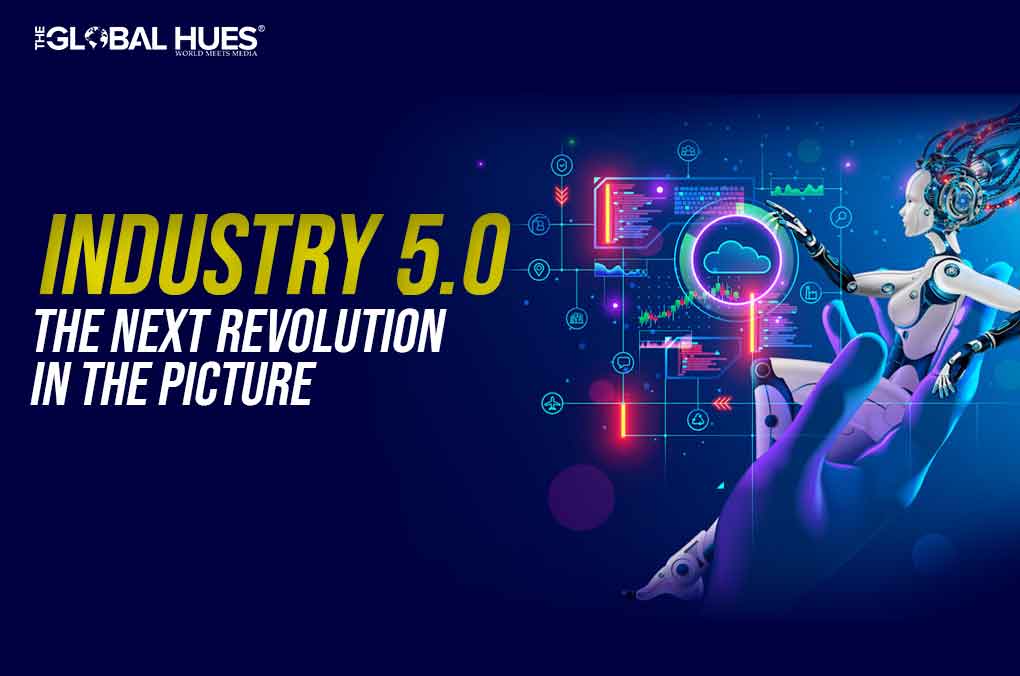Before we start discussing Industry 5.0, let’s clear one thing in our heads – Industry 5.0 applies to every sector and every organisation one can think of. The European Union describes the new industrial revolution as providing, “a vision of industry that aims beyond efficiency and productivity as the sole goals, and reinforces the role and the contribution of industry to society.”
There is a significant distinction between Industry 4.0 and Industry 5.0. Industry 5.0, as described by the EU, “places the well-being of the worker at the centre of the production process and uses new technologies to provide prosperity beyond jobs and growth while respecting the production limits of the planet.”
Before we dig deeper into the concept of Industry 5.0, it’s important to understand how did we reach the fifth industrial revolution.
-
Industry 1.0
Beginning in around 1780, the first industrial revolution focused on items being produced by machines that were powered by steam and water.
-
Industry 2.0
Around a century later, the second industrial revolution also known as the Technological revolution came in Germany, America, and Britain. It involved industrial processes that used machines powered by electrical energy.
-
Industry 3.0
From 1970 onwards, Industry 3.0 saw automation via the use of robotics, computers, and electronics.
-
Industry 4.0
The fourth industrial revolution focuses heavily on interconnectivity, real-time data, machine learning, Internet of Things, artificial intelligence, automation etc.
-
Industry 5.0

We are now entering into the fifth industrial revolution which unlike, Industry 4.0, focuses on man and machines working together. It is all about robots helping humans work faster through the use of advanced technologies.
| Industry 1.0 | 1780 | Mechanization, Water & Steam power |
| Industry 2.0 | 1870 | Mass production, electric power, assembly line |
| Industry 3.0 | 1970 | Computers, automated production, electronics, robotics |
| Industry 4.0 | 2000 | Cyber-physical systems, IoT, Data Analytics, machine learning |
| Industry 5.0 | 2020 | Human-robot collaboration, cognitive systems, customization |
Differences Between Industry 4.0 and Industry 5.0
| Industry 4.0 | Industry 5.0 |
| Focuses on process automation | Focuses on balancing machine-human interaction |
| Integration of technology is most important | Collaboration between humans and machines is most important |
| Use of smarter & better-connected machines | Merging cognitive computing with human intelligence |
| Cutting down on human labour as smarter technologies started being implemented | Focused on the interaction among humans as well as machines, hence increased use of humans |
| A complete virtual environment | Transition to the real environment |
Advantages of Industry 5.0
-
Higher Value Jobs
One of the prime advantages of Industry 5.0 is the creation of higher value jobs with larger freedom for design thinking and creativity. Human workers are able to focus more on delivering bespoke products and services as manufacturing processes are handled through automation.
-
Forecast of Production Efficiency
Industry 5.0 technologies like smart, connected machines with customised software, machine learning and industrial automation would be able to forecast production efficiency based on the current activities.
-
Increased Focus on Sustainability
Industry 5.0 pushes companies towards sustainability and resilience as it promises to use resources wisely, which eventually means that businesses would become more agile and flexible while also having a positive impact on the overall society. Waste and overproduction will be reduced as the collaboration between humans and machines will lead to flexible business models.
Other Advantages
- Competitive edge in new markets
- Adapted training for evolving skills
- Improved safety and well-being
- Empowered workers remaining in control
Challenges Of Industry 5.0
Although it’s difficult to trace the disadvantages of Industry 5.0, the main challenge lies in how organisations will be able to adapt to embrace this new concept.
-
Development of New Skills
Working with robots sounds fascinating but humans may need to develop completely new skills including learning how to collaborate with a smart machine. Technical skills will also be required. This may also lead to hiring Chief Robotics Officer who would program the industrial robot.
-
Adoption of New Technologies
3D printing, real-time data, collaborative robotics, customised software connecting factories, Internet of things (IoT), and Artificial Intelligence (AI) to name a few have to be adopted which we all know, always take time and effort.
-
Huge Investments
On the one hand, training people for new jobs and on the other hand, buying technologies, none would come cheap. Some companies may genuinely find it challenging to upgrade their production lines for industry 5.0. Small companies or companies that can’t afford it would be left behind.
Opportunity for India
India is aspiring to become a manufacturing hub. Various initiatives such as Make in India, Skill India and Start-up India are helping in achieving this aim. The National Association of Software and Services Companies (NASSCOM) in its recent report has mentioned that the Indian manufacturing industry has spent between $5.5 to $6.5 bn on Industry 4.0 solutions in 2020-21.
The Indian government has set a target of increasing the contribution of manufacturing output to 25% of GDP by 2025. The integration of Make in India with the principles of Industry 4.0 can help in achieving the desired objectives and can eventually make India the forerunner in smart manufacturing systems.
Concluding Words
While the whole world is still in the middle of the fourth revolution, the fifth revolution is already knocking at the door. Industry 4.0 transforms into Industry 5.0 when we bring customization into the picture i.e. bringing the human touch back into the process.
Moreover, Industry 5.0 will make organisations tomorrow-ready because of the adoption of sustainable models. Less waste generation and finding environmentally friendly solutions will gain prominence.




